Falafel has really turned into one of my staple dishes. It couldn’t be easier to make and you can literally turn these little cakes into anything. Top it on a salad, throw them in a sandwich or a wrap, enjoy them like a burger, or just eat them plain with a bit of tzatziki. I like to prepare a double batch and then create enough patties to use half for the week and freeze the other half for meals later in the month.
Hello Falafel Recipe
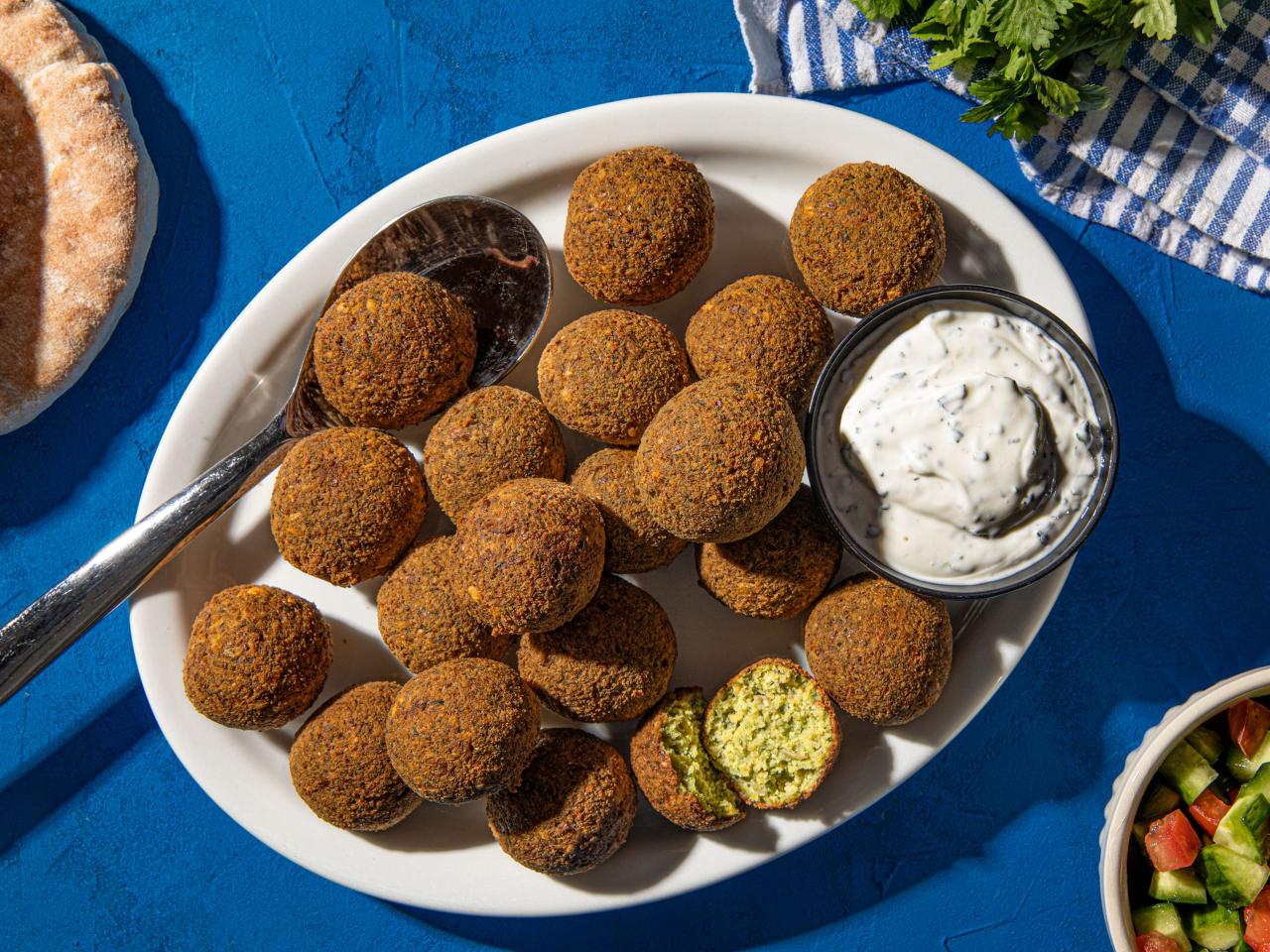
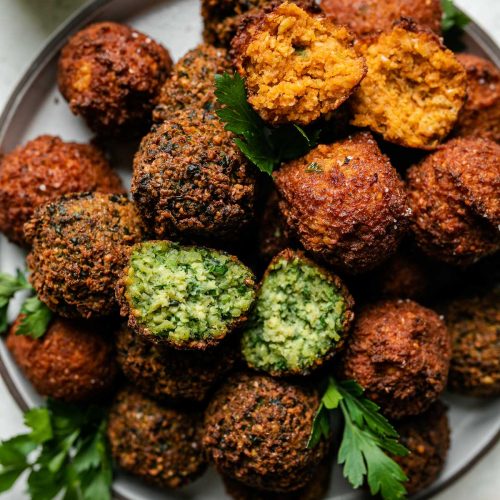
Hello Falafel
Equipment
- 1 medium pan
Ingredients
- 3 c. unsalted garbanzo beans
- 2 Tbs. parsley (dried or fresh)
- 2 cloves garlic (I prefer roasted garlic. you can fast roast by peeling the garlic and toasting in a pan with a bit of oil)
- 1 1/4 tsp. ground cumin
- 1 tsp. ground coriander
- 1/2 tsp. ground turmeric
- 1 lemon
- 1 egg
- 2 tsp. salt (or more to taste)
- 3/4 c. panko bread crumbs (set aside 1 C for breading your falafel cakes)
Instructions
- Let this mixture sit for about 10 min so that the breadcrumbs set up in your falafel batter. This will allow you to scoop the mixture, create a patty and coat with panko bread crumbs.
- Once your breaded patties have been created. Heat a medium pan on medium high heat (choose something non stick like a cast iron pan) with about 2 Tbs of oil of your choice (I use olive oil). Once your oil is hot place your patties in the pan. Flip carefully with a spatula. Brown on each side and serve!
Cooking Tips about Falafel
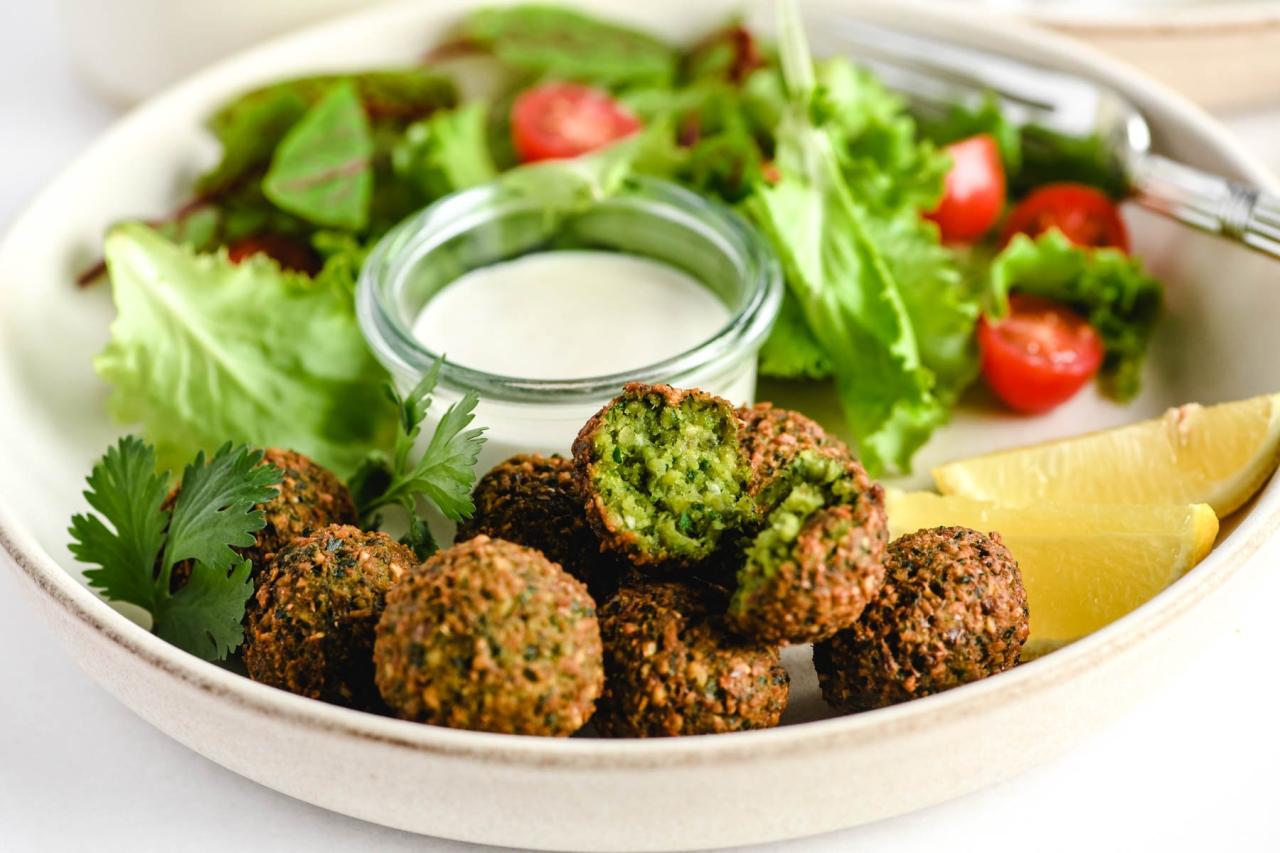
- Choice of Ingredients: Begin with dried chickpeas (or fava beans, if you prefer). Soak them overnight to soften them up. Avoid using canned chickpeas, as they tend to make the falafel too mushy.
- Herbs and Spices: The unique flavor profile of falafel comes from the herbs and spices used. A combination of parsley, coriander, garlic, and cumin is traditional. Feel free to adjust according to your taste preferences, but keep in mind that the herbs should not only add flavor but also contribute to the vibrant green color of the mixture.
- Mixing: When processing the ingredients, aim for a texture that holds together well but is not too fine. A coarse mixture ensures the falafel has the right consistency and doesn’t become too dense.
- Resting the Mixture: Allow the falafel mixture to rest in the refrigerator for at least an hour before forming the balls or patties. This step helps the flavors meld together and makes the mixture easier to shape.
- Shaping: Traditional falafel is shaped into small balls or slightly flattened patties. If the mixture is too dry and crumbly, adding a bit of water or lemon juice can help it bind together. To ensure uniform cooking, try to keep all pieces the same size.
- Frying: Deep-fry falafel in oil that has been heated to around 350°F (175°C). It’s important to fry them until they are golden brown and crispy on the outside but still tender on the inside. Do not overcrowd the pan, as this can lower the oil’s temperature and result in soggy falafel.
- Drainage: After frying, let the falafel drain on a paper towel to remove excess oil. This step ensures they remain crispy.
- Serving: Serve falafel hot for the best texture and flavor. They can be stuffed in pita bread with salad, pickled vegetables, and tahini sauce, or served on a platter with dipping sauces and accompaniments of your choice.
- Experimentation: Don’t be afraid to experiment with variations. Add different spices, herbs, or even incorporate other legumes to find the mix that you love the most. Falafel can also be baked for a healthier option, though this will result in a different texture than deep-frying.
Serving suggestions about Falafel
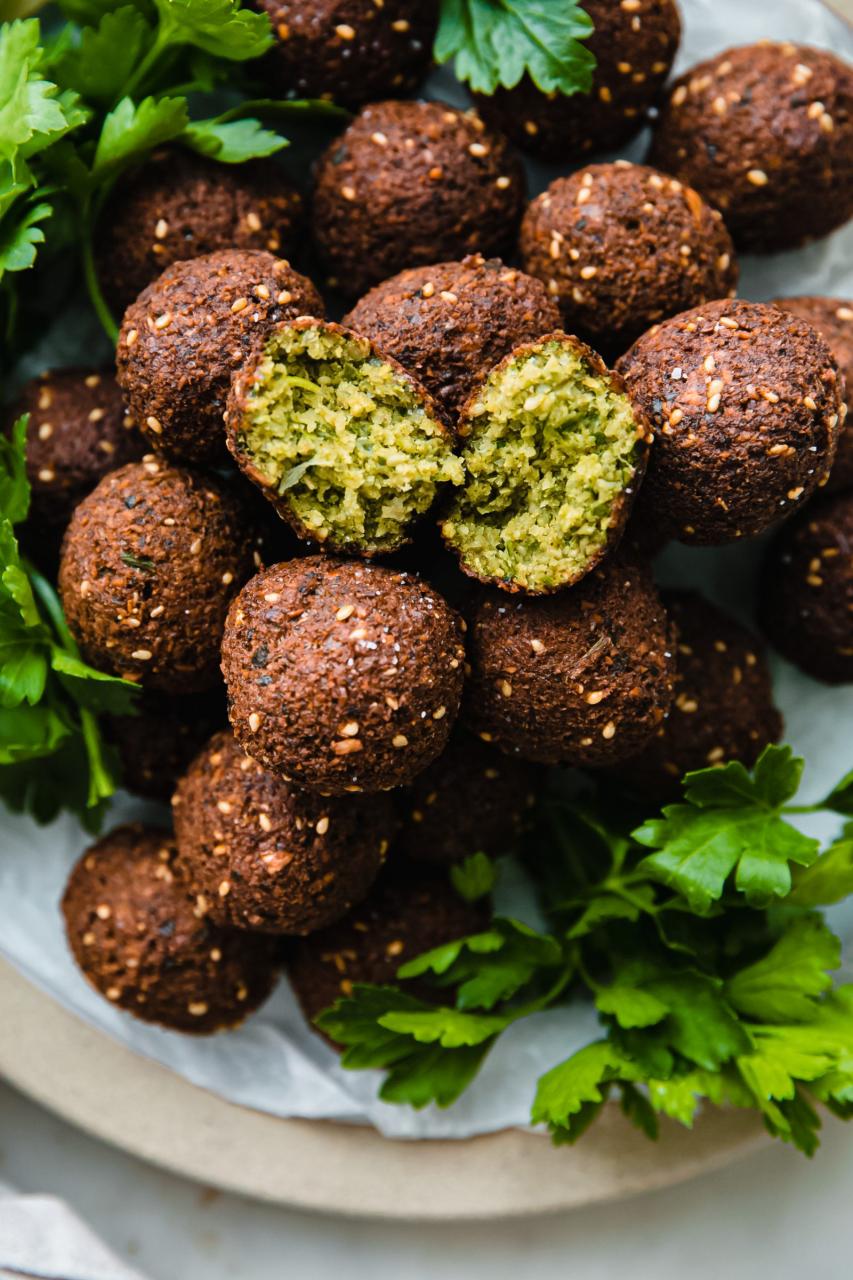
- Classic Pita Sandwich: Stuff falafel balls or patties into a warm, soft pita bread along with shredded lettuce, diced tomatoes, sliced cucumbers, and red onions. Add a generous dollop of tahini sauce or hummus for creaminess. For an extra kick, include a few slices of pickled vegetables or a drizzle of hot sauce.
- Falafel Salad Bowl: Arrange a hearty salad by placing falafel over a bed of mixed greens. Add a colorful medley of vegetables such as cherry tomatoes, sliced cucumbers, bell peppers, and red onions. Garnish with fresh herbs like parsley or mint, sprinkle with crumbled feta cheese, and finish with a lemon-tahini dressing.
- Falafel Wrap: Use a large, soft flatbread like laffa or a whole wheat tortilla to tightly wrap falafel along with your choice of fillings and sauces. This makes for a portable and less messy way to enjoy falafel on the go.
- Falafel Platter: Serve falafel as part of a mezze platter, accompanied by other Middle Eastern favorites such as hummus, baba ghanoush, tabbouleh, stuffed grape leaves, and warm bread. This is ideal for sharing and allows everyone to sample a little bit of everything.
- Falafel Bowls: Create a customizable falafel bowl starting with a base of grains like couscous, rice, or quinoa. Top it with falafel, a variety of veggies, and your choice of sauce. This option is great for meal prepping or serving a family-style meal where everyone can build their own bowl.
- With Dips: Falafel can also be enjoyed simply as a finger food, served with a selection of dips beyond the traditional tahini sauce. Consider offering options such as yogurt-cucumber dip, spicy tomato salsa, or a tangy pomegranate molasses dip for guests to choose their favorite accompaniments.
Top 5 FAQs about Falafel
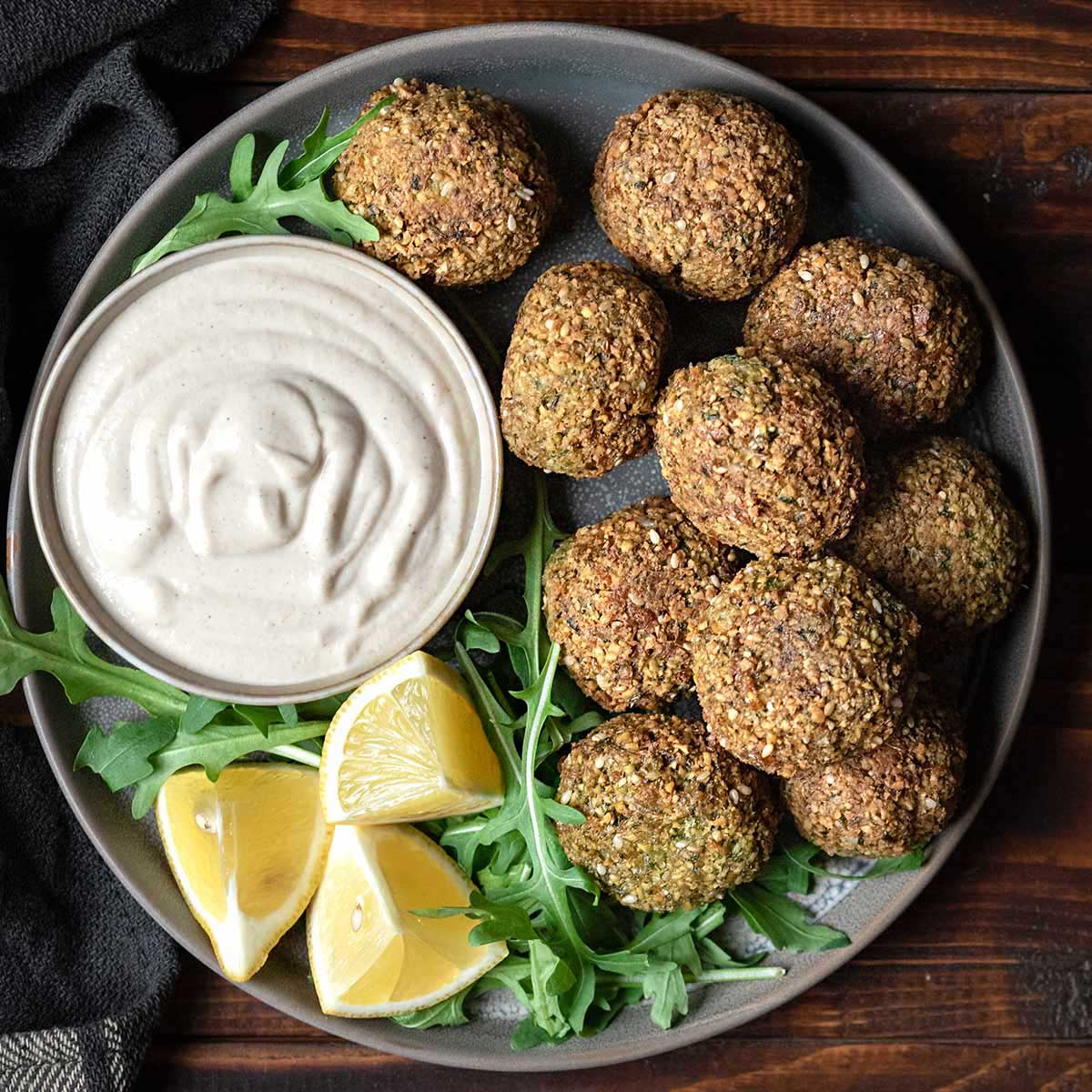
- What is falafel? Falafel is a traditional Middle Eastern food known for its distinctive taste and nutritional benefits. It consists of deep-fried balls or patties made from ground chickpeas, fava beans, or both, seasoned with herbs and spices such as parsley, coriander, garlic, and cumin.
- What are the origins of falafel? The origins of falafel are debated among historians and cultural scholars, with several Middle Eastern countries claiming it as their own. Despite this, it is widely accepted that the dish has been enjoyed in the region for centuries, reflecting the area’s rich culinary traditions.
- How is falafel traditionally served? Traditionally, falafel is served in a pita bread or wrapped in a flatbread (laffa) along with salad, pickled vegetables, hot sauce, and a drizzle of tahini-based sauces. This combination enhances the flavor of the falafel and adds various textures, making it a satisfying meal.
- Is falafel a healthy food choice? Yes, falafel is considered a healthy food option. Since it is made from legumes, it is high in protein, fiber, and complex carbohydrates while being low in fat. This makes it a popular choice among vegetarians and health-conscious eaters.
- Can falafel cater to different dietary preferences or styles? Absolutely. Falafel is incredibly versatile and can be enjoyed in many ways, such as in sandwiches, salads, wraps, platters, bowls, or even as finger food with various dips. It can also be adapted by adding different spices, herbs, or legumes, and there’s an option to bake instead of deep-frying for a healthier alternative. This versatility makes falafel suitable for various tastes and dietary needs.
Falafel stands as a testament to the rich and diverse culinary traditions of the Middle East, transcending geographical and cultural boundaries to become a globally cherished dish. With its roots deeply embedded in centuries-old history, falafel not only delights the palate with its unique flavor and texture but also carries with it stories of lineage, tradition, and shared heritage among various cultures within the Middle Eastern region.
Leave a Reply